|
The painting "Four People" is solved. The general "feel" of the individual figures will not change much as the painting continues to be refined. There are many details to clarify but overall the painting has reached an emotional truth which I can accept as authentic. My biggest problem with this reproduction is its color balance, which is wrong. I tried and failed to correct it using "Photoshop." I have concluded my camera requires a new white balance. The reds seen on the left figure's forehead, and the man's arm being touched by the woman, are very far from the color seen in the actual painting. Before I post a color reproduction again I will make an effort to properly white balance my camera.
One quick drawing was made yesterday. I did not spend much time drawing because I wanted to get right to painting. 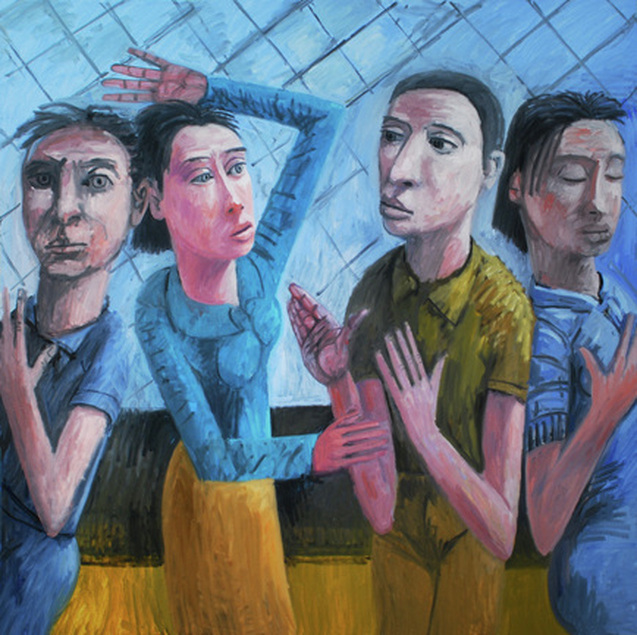 Srinivasa Ramanujan was a brilliant 20th century mathematician; he has often been labeled a "natural mathematician." Ramanujan was a penniless Brahmin from Madras in South India who was not formally educated, unlike his counterpart, the Cambridge University professor G.H. Hardy. Ramanujan heavily relied upon mathematical intuition to solve problems. Hardy was not comfortable with intuition; he could not escape his education. Ramanujan was the better mathematician. Being an artist requires extreme trust of intuition, or non-verbal thought. I have had to work on stripping down, and throwing away, thoughts and ideas learned in my "education." In the process of making art I peel off my education and see more clearly.This stripping away enhances my knowing in ways impossible to verbally elucidate. I can only hope to explain my knowledge by rumination in retrospect (what just happened?). You can see my intuition at work in the painting "Four People." The transformation from yesterday's post is large. I will not try to describe this transformation in words beyond pointing out the big changes in the heads of three out of four of the figures, and subtle changes in several of the figures' limbs. "Four People" feels better to me today, intuitively better, than it did yesterday; it rings more truthfully to my version of reality. The easiest place to identify this alteration toward my truth is in the expression of the woman on the extreme right. Yesterday I wrote about the necessity for change is her expression; here is my solution.
Now for the drawings from yesterday... The painting "Four People" has now been completely painted. This does not mean it is done; it means I have touched the entire painting with first impulses. Now to the revisions! I do not believe this painting will take as much time to complete as "Pond." I believe it will be solved within a week, and finished within two weeks. Without further ado, I post "Four People" for the fourth time. (And yes, the expression on the woman on right annoys me and will be changed today. Her face was painted in 15 minutes as a first impulse.) The one drawing made yesterday was a classic warm-up drawing, preparing me to work on "Four People." I concentrated on faces, body language, and how the clothes fit the bodies. I like this drawing.
Yesterday one of the most time demanding essentials of life took me out of the studio. It is redundant for me to tell you (after the title of today's post and the one drawing from yesterday afternoon); the essential was money. I will not go into details because this is an art blog, but money is required in order to make art (an artist needs food, shelter, and art supplies).
I like the drawing I made yesterday, especially the shirt sleeve and arm of the guy on the left. Money has always been a problem for me, one I wish would go away. Conflict and frustration lead to emotions and thus yesterday's drawing. A great influence on my art is Georges de la Tour. I am thinking of de la Tour's painting, "The Fortune Teller," which I wish I could reproduce here, but it is copyrighted. Another important set of works which influence my art is Cezanne's card players. Cezanne made several versions of "Card Players" and you will soon be able to see the paintings and preliminary drawings together in an exhibition at the Metropolitan Museum of Art in New York City, which opens February 9, 2011. OK, back to work... 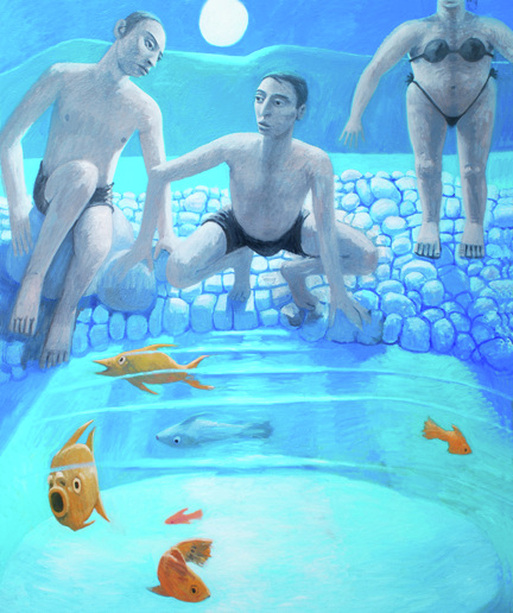 Yes, "Pond" is solved. By this I mean there are no major changes to come, but a few details need to be cleaned up. I did not make a great effort to reproduce it well, which I will do upon its ultimate conclusion. At that point an excellent reproduction of "Pond" will appear on my website, MEHRBACH.com. At this point it is not possible for me to work on "Pond" for more than a short time every day. The paint needs to be dry in order for me to complete a detail without muddiness. Working this way I should finish all details within 10 days. Yesterday I made one drawing and I also spent a few hours painting on "Four People." I will post a photo of "Four People" when I complete the initial painting of all four figures. This should happen today or tomorrow. Here is the drawing of the day...
Persistance is required to complete the painting "Pond." Right now it looks very good, but it is not as good as possible. I feel compelled to finish it properly. The last two days have seen great strides toward satisfactory completion of this painting. Yesterday I worked on the head and shoulders of the left figure (they now glow with beautiful play of light and satisfying form). Today, I will continue to make more subtle changes. I am hanging in there and will finish this panting without compromise. You have just read a pep talk to myself, required because "Pond" already is a beautiful work of art, so I question, "Why continue?" "Pond" already satisfies my need for expression, but I have a need to make it as right as it can be. This brings up the eternal question, "When is a painting finished?" If one look at paintings by Cezanne, Picasso, and Matisse you will see many paintings with "unfinished" portions. In a future post I will mull over this perpetual problem.
I made two drawings yesterday. The second has a mouse. This reflects my need to catch of these critters because they recently entered our home and soiled a few kitchen drawers. This happens every autumn as the mice look for a warm place before winter sets in. The drawing exhibits my conflict in killing these cute little animals. Talking about emotional swings: earlier this week I was in the middle of an emotional high. Now I feel struggle is back in full force. Like the majority of us, I wish life would mostly be calm and centered. Reality is we swing from optimism to pessimism. My daily visits to the studio allow the center of my existence to be touched and known. While making art I am closest to myself, centered on myself and my existence. That center is a very nice place to be. Yesterday I returned to the painting "Pond." It moved forward, but surprised me in its demands. I worked on the central figure. The central figure's left leg (on the viewer's right) required complete re-drawing. This led to me subtly re-painting his arms and hands. I'll return to "Pond" again today. Yes, every moment of work on this painting gets it closer to conclusion. This painting is a revolution. It is not quick or easy, but it has changed the way I make art. The main reason it has taken an extended time to complete is my discovery during its journey. An example is yesterday's change in the central figure. My ability to see the required changes has been enhanced by learning while making "Pond." As example, my newest painting, "Four People," is being solved much more quickly. In making "Four People" I am not having to dig myself out of the same misdirections and traps. Two drawings were made yesterday, and here they are... The second drawing is a repetitive theme in my oeuvre. I was an excellent distance runner. It was running which first instructed me in discipline as conduit to success. Perhaps, in my language, a couple running symbolizes a requirement for a successful relationship.
Even one day away from the studio disturbs the fluidity of my ongoing research. Yesterday I entered the studio believing I would make one drawing and then proceed to paint. But I did not paint at all. I made three drawings. The second one is a study for an upcoming diptych of man/woman and woman/man, alternating the dominating gender.
Today I will go back into the painting "Pond" in hopes of finishing it off. Philip Guston and Seymour Leichman were my two most important mentors. I apprenticed four years with Seymour and studied with Philip for two years as a graduate student at Boston University. There was another art professor at Boston University, James Weeks. He was the day to day mentor of the graduate students at B.U., while Guston visited once a month for several intense days of critiques. Weeks had been a member of the "California School" of painters, which included Richard Diebenkorn and David Park. I mention James Weeks because he and I did not see alike. He revered one technical idea which he believed was the hallmark of Matisse: Weeks struggled to make paintings which conformed to the two dimensionality of canvas. For Weeks, all color and form must, above all else, announce the flat surface of the painting. This is fine, and every good painter knows this as a technical problem of making form on a two dimensional surface, but for James Weeks it dominated his art so much that he could not see the main thrust of my art.
One day James Weeks was in my studio, looking at my recent work, and he burst out, "What is it with you and Rembrandt? You have to let go!" This brings me to Philip Guston and his essay "Faith, Hope, Impossibility," written in October 1965, just as he was turning from his "Abstract Impressionist" phase to his new figurative work. When I studied with Guston (during the same years I studied with Weeks) Guston never mentioned Rembrandt to me. In his essay Guston wrote, "Two artists fascinate me - Piero della Francesca and Rembrandt. I am fixed on those two and their insoluble opposition. Piero is the ideal painter: he pursued abstraction, some kind of fantastic, metaphysical, perfect organism. In Rembrandt the plane of art is removed. It is not a painting, but a real person - a substitute, a golem. He is really the only painter in the world!" From this quote you know my dilemma: I am a modern painter: I honor Cezanne, Matisse, Picasso, Giacometti, and Balthus. I also am involved in making my art full of the demands of Rembrandt: I want my painting to be a substitute for reality. If I succeed, when you view my art you are immersed in the reality in front of you in the way you are immersed during an emotional response to the real world around you. If I succeed, while viewing my art you also feel the modern idea of the two dimensionality of the picture plane, the abstraction. Like Guston I seek to solve both artistic problems simultaneously, Piero della Francesca and abstraction, and Rembrandt and the image being an identical substitute for reality. I want to tell you about one more of Philip Guston's ideas found in the essay I am discussing today. This idea has great meaning to me. Guston wrote, "There are twenty crucial minutes in the evolution of each of my paintings. The closer I get to that time - those twenty minutes - the more intensely subjective I become - but the more objective too. Your eyes get sharper; you become continuously more critical. There is no measure I can hold on to except this scant half-hour of making." And... "Everyone destroys marvelous paintings. Five years ago you wiped out what you are about to start tomorrow. Where do you put a form? It will move all around, bellow out and shrink, and sometimes it winds up where it was in the first place. But in the end it feels different, and it had to make the voyage. I am a moralist and cannot accept what has not been paid for, or a form that has not been lived through. Frustration is one of the great things in art; satisfaction is nothing." If you have been reading every word of my blog you know how I wrestle with the problem of making art and happiness. Philip Guston is on to something important here: "satisfaction is nothing." It is during the making of art when one touches true happiness. The artist cannot find happiness in the object which is the work of art, only frustration. There is frustration because one never finds absolute truth and veracity in the final product. It is during the making of art when one glimpse's the truth of existence. It is impossible to have absolute knowledge. The meaning of existence cannot be contemplated but is felt in moments of creation. When I entered the studio yesterday I believed I would make one warm-up drawing and move right to painting. Instead I found myself disappointed in the conservative approach of my first drawing of the day, being a revisit to recent strongly linear efforts, and too "normal" in anatomy and composition. So, I attacked my approach with a second drawing. I made a stab at being more forceful with space and anatomy. The second drawing took several hours of my time and absorbed the rest of the day. The most obvious change in approach from drawing #1 to drawing #2 is the re-entering atmospheric considerations in #2. It also revisits a theme I examined on October 1, 2010 (drawings posted on 10/02/2010). However, in yesterday's second drawing I reversed the scene, with the man in a dominating position, where the earlier drawings show the woman in the commanding position. I am contemplating a diptych, two paintings with each gender having their moment in the controlling position.
Yesterday I said I would quote from a essay by Philip Guston. I don't have time today as a major trip is taking over my day. This means I will not draw or painting today. Tomorrow I will have time to devote to Guston's essay and why it is so important to my work. |
To read my profile go to MEHRBACH.com.
At MEHRBACH.com you may view many of my paintings and drawings, past and present, and see details about my life and work. Archives
April 2024
|
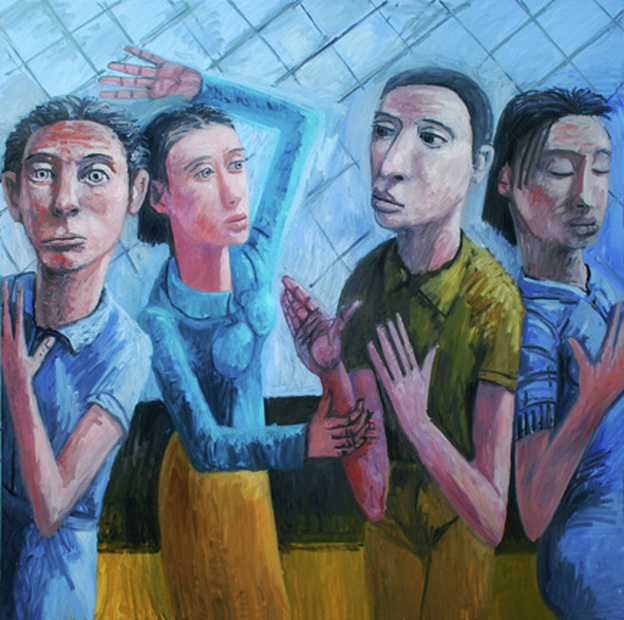
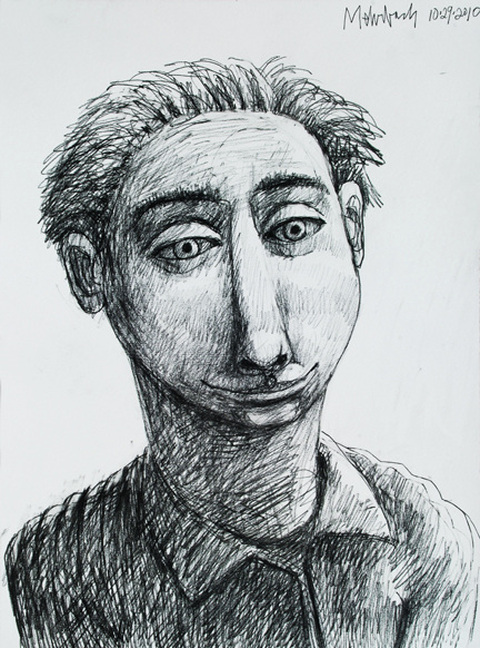
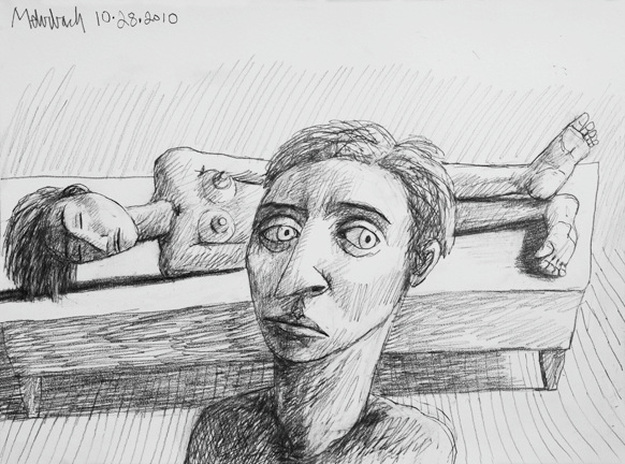
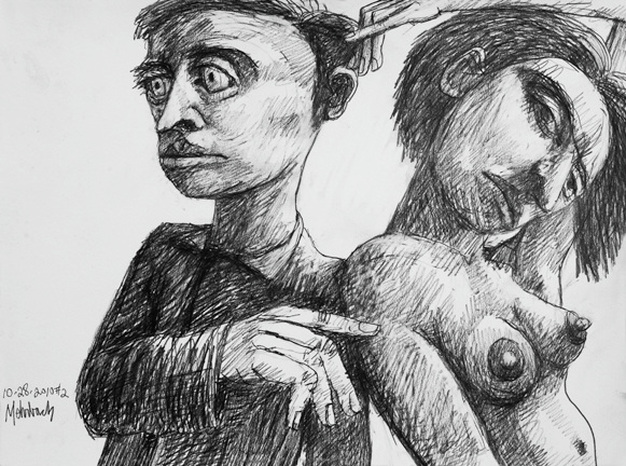
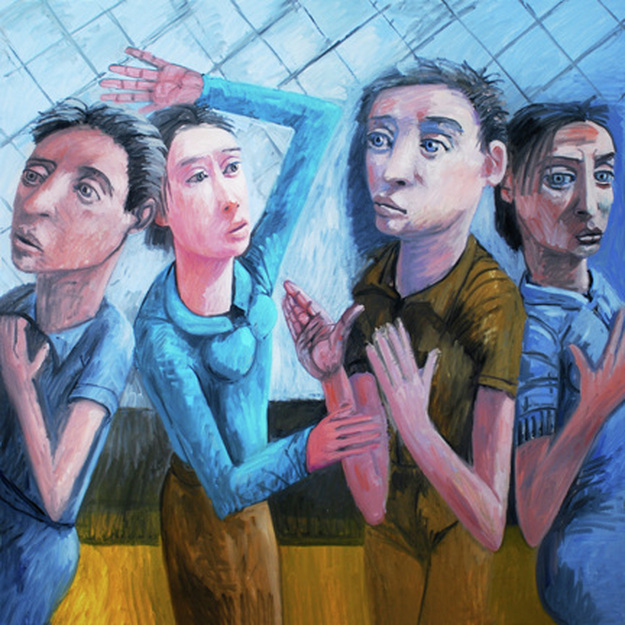
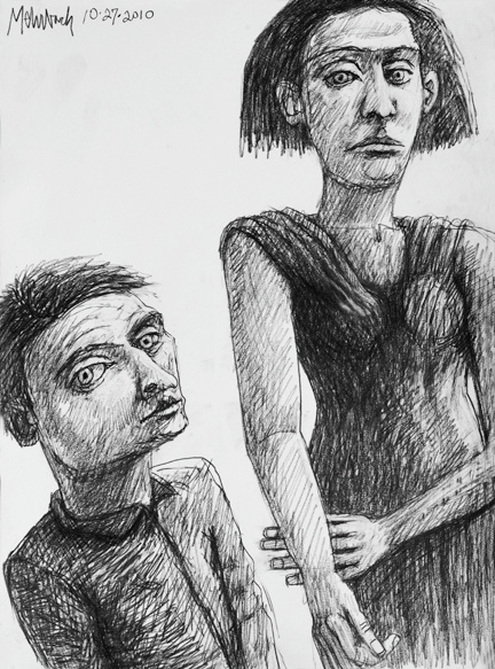
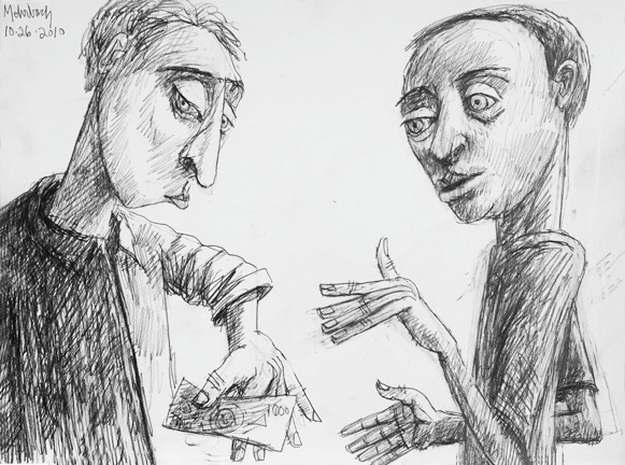
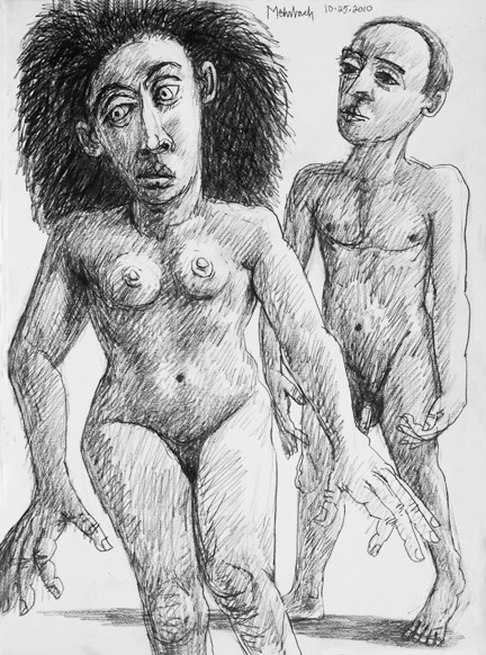
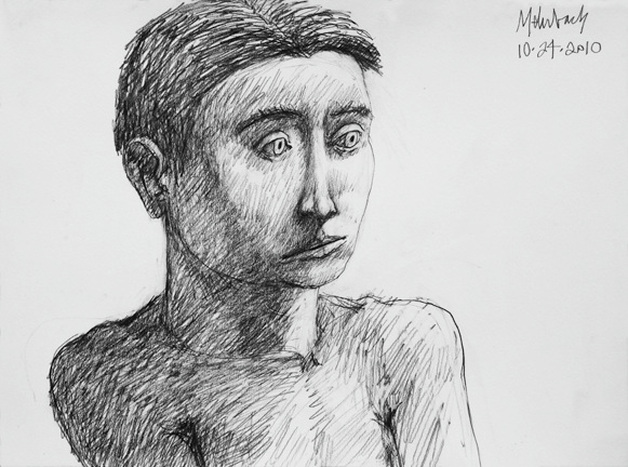
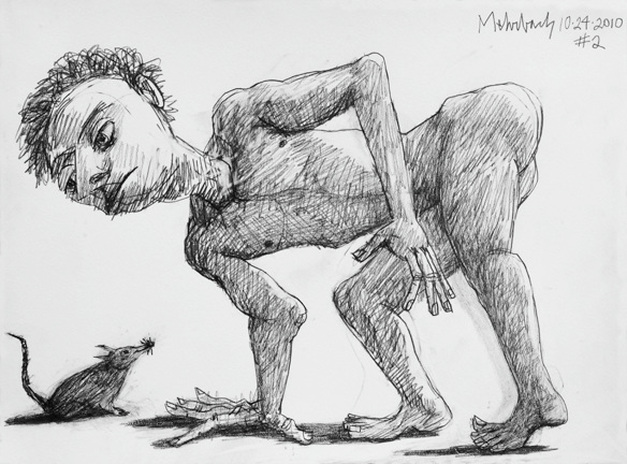
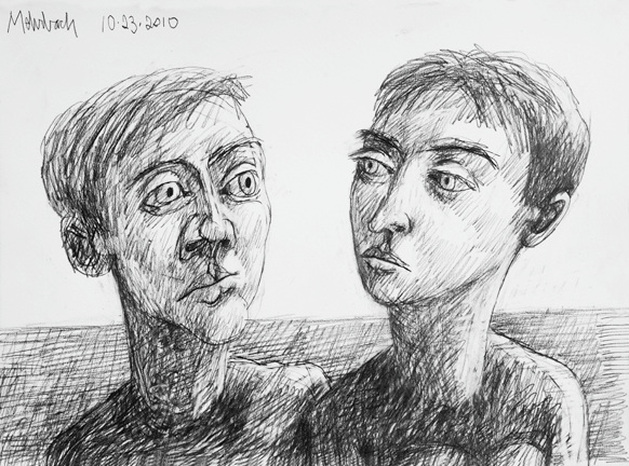
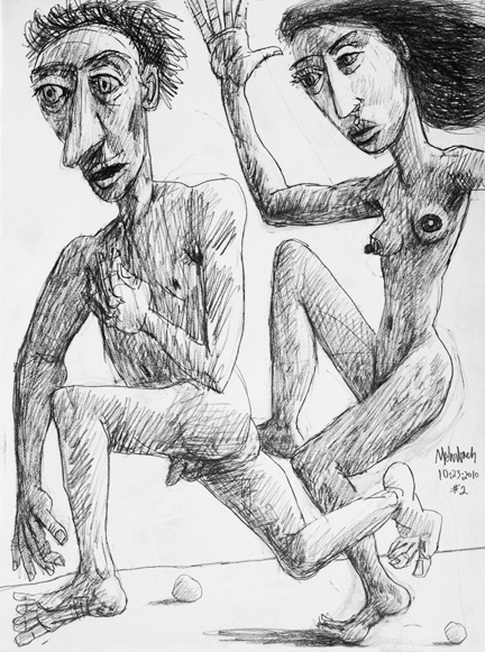
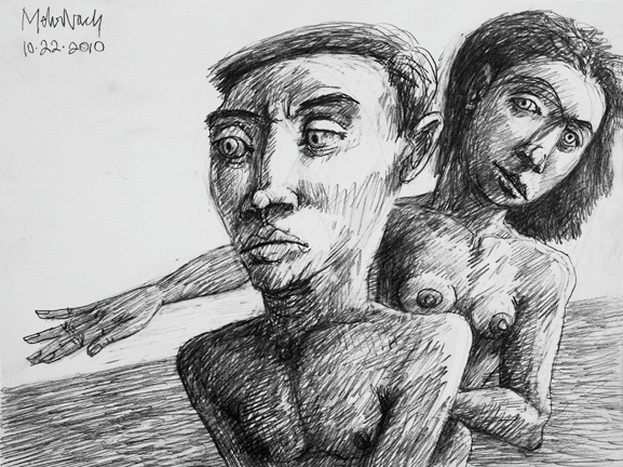
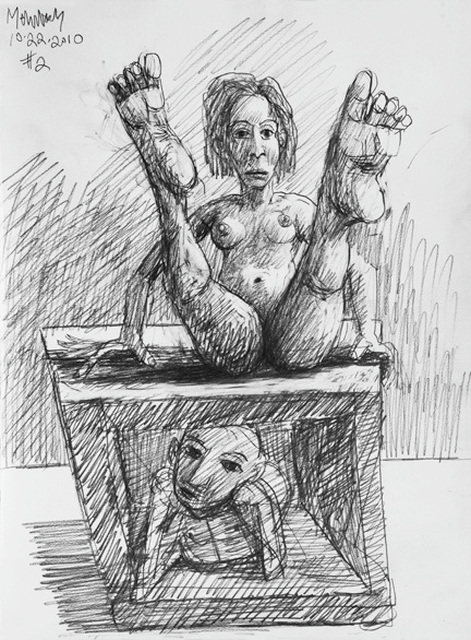
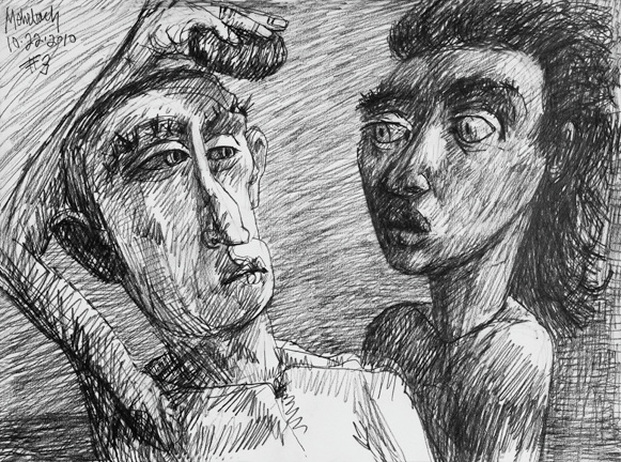
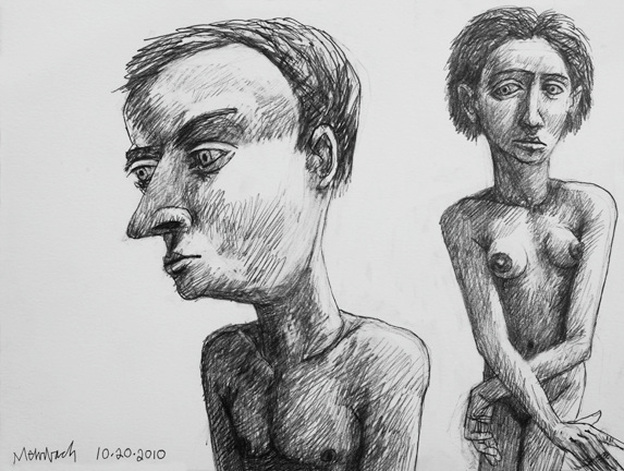
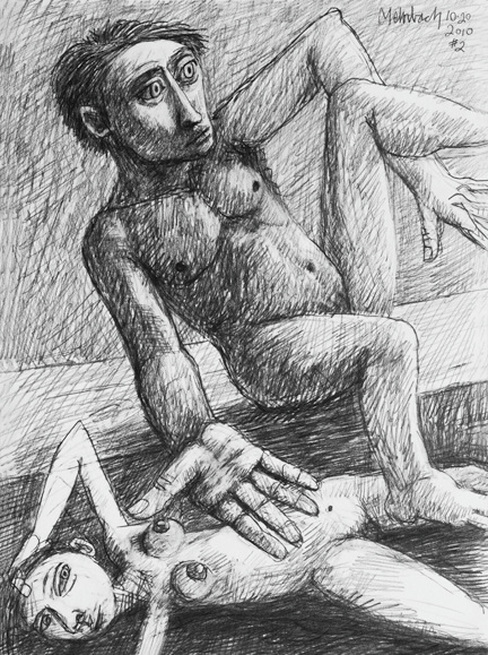
 RSS Feed
RSS Feed